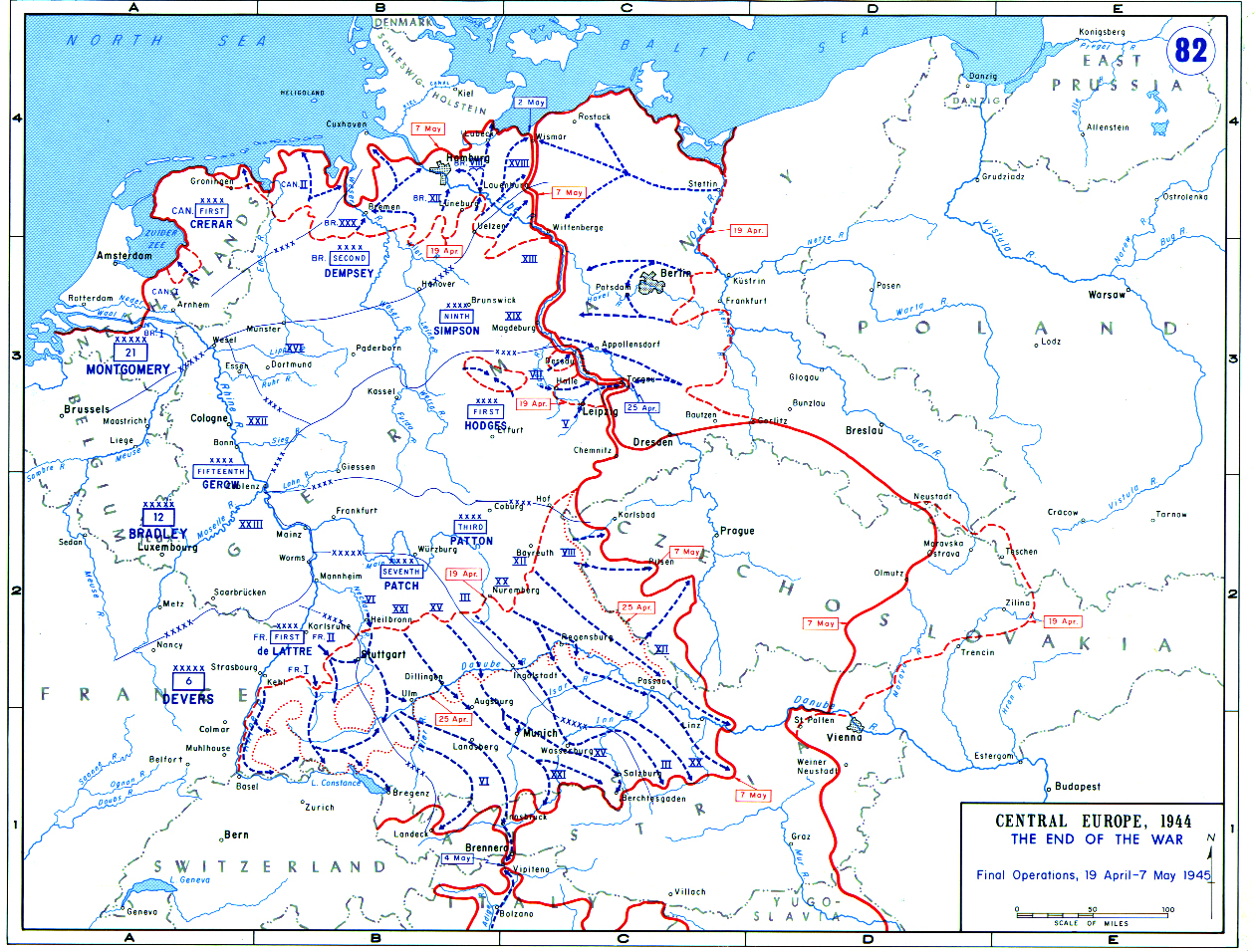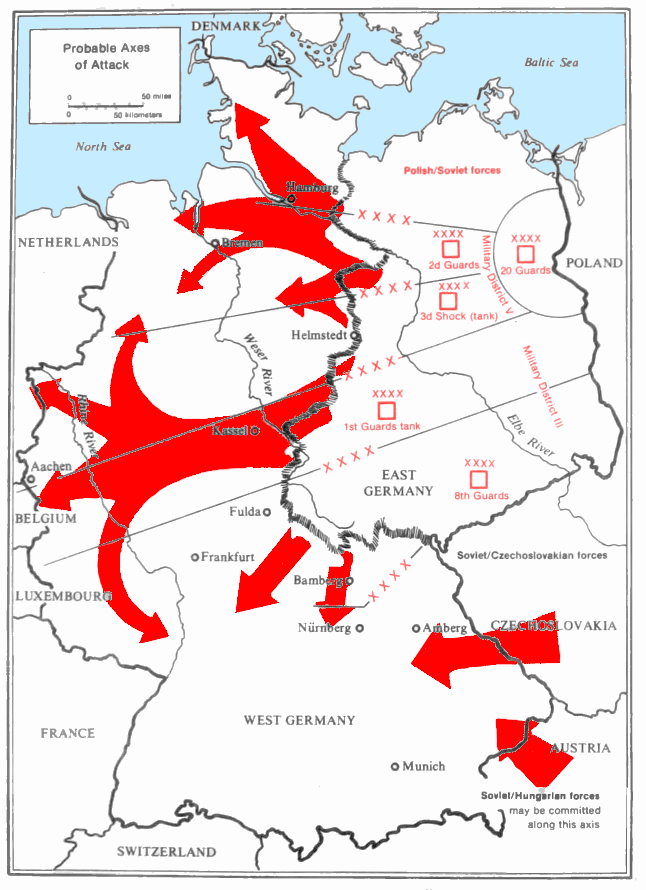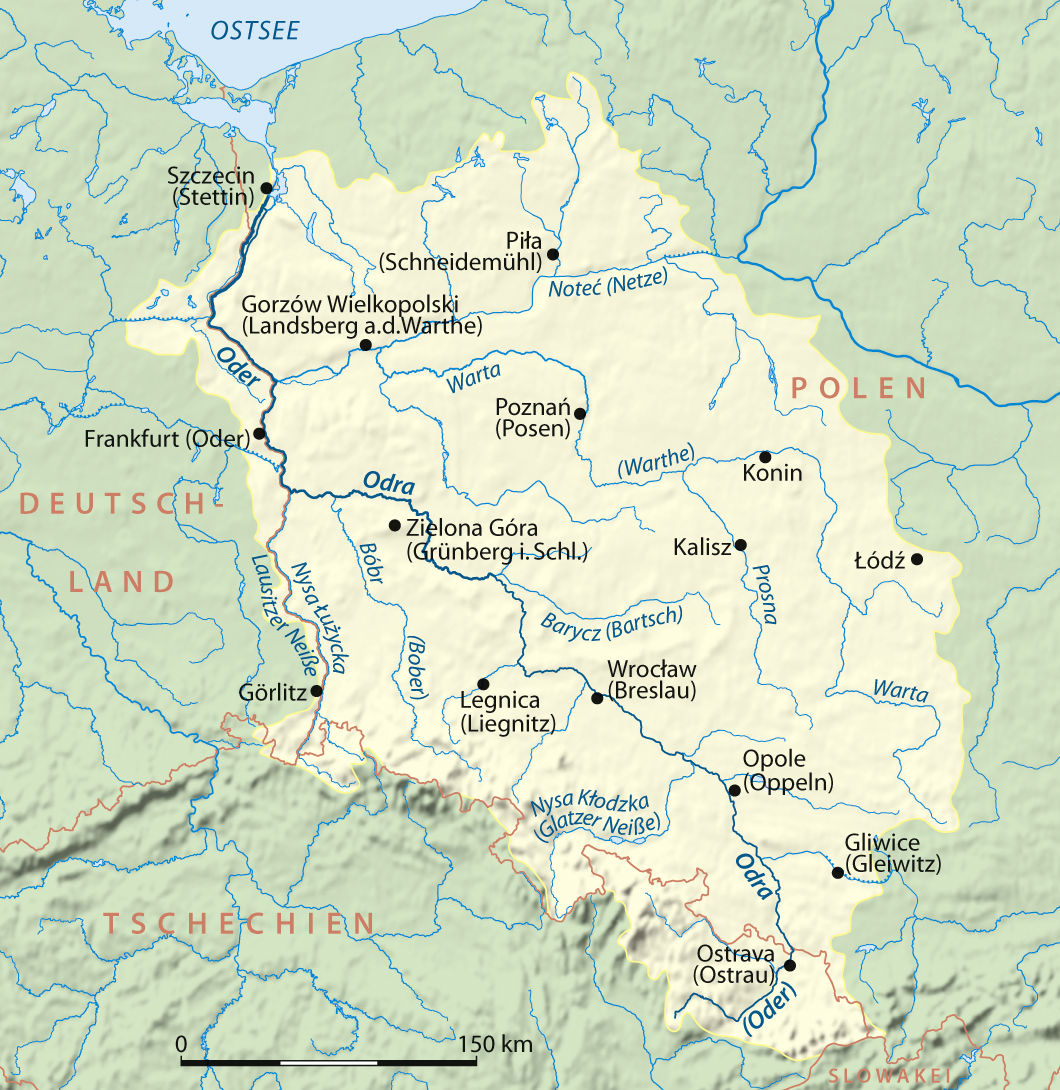|
Alpenfestung
The Alpine Fortress () or Alpine Redoubt was the World War II German national redoubt planned by Heinrich Himmler in November and December 1943."Himmler started laying the plans for underground warfare in the last two months of 1943.... The plans are threefold, embracing (1) Open warfare directed from Hitler's mountain headquarters; (2) Sabotage and guerrilla activity conducted by partisan bands organized by districts, and (3) Propaganda warfare to be carried on by some 200,000 Nazi followers in Europe and elsewhere. Strongholds Established Already picked S.S. (elite) troops have been established in underground strongholds and hospitals in the Austrian, Bavarian and Italian Alpine area and it is the plan of Nazi leaders to flee to that region when the German military collapse comes." . Plans envisaged Germany's government and armed forces retreating to an area from "southern Bavaria across western Austria to northern Italy"."But what of the top Nazis who cannot hide? With a co ... [...More Info...] [...Related Items...] OR: [Wikipedia] [Google] [Baidu] |
National Redoubt
A national redoubt or national fortress is an area to which the (remnant) military forces of a nation can be withdrawn if the main battle has been lost or even earlier if defeat is considered inevitable. Typically, a region is chosen with a geography favouring defence, such as a mountainous area or a peninsula, to function as a final holdout to preserve national independence and host an effective resistance movement for the duration of the conflict. Western Europe Belgium From the middle of the 19th century until 1914 the fortress city of Antwerp was the official National Redoubt of Antwerp in Belgium. Fortress Antwerp was a defensive belt of fortifications built in two rings to defend Antwerp. Antwerp was designated to be a national redoubt ( or ) in case Belgium was attacked. It was built in the period 1859–1914. In total it encompasses a belt of fortifications of 95 km. During the 1914 Siege of Antwerp it held out for 12 days. France In 1940, Brittany was briefly ... [...More Info...] [...Related Items...] OR: [Wikipedia] [Google] [Baidu] |
World War II
World War II or the Second World War (1 September 1939 – 2 September 1945) was a World war, global conflict between two coalitions: the Allies of World War II, Allies and the Axis powers. World War II by country, Nearly all of the world's countries participated, with many nations mobilising all resources in pursuit of total war. Tanks in World War II, Tanks and Air warfare of World War II, aircraft played major roles, enabling the strategic bombing of cities and delivery of the Atomic bombings of Hiroshima and Nagasaki, first and only nuclear weapons ever used in war. World War II is the List of wars by death toll, deadliest conflict in history, causing World War II casualties, the death of 70 to 85 million people, more than half of whom were civilians. Millions died in genocides, including the Holocaust, and by massacres, starvation, and disease. After the Allied victory, Allied-occupied Germany, Germany, Allied-occupied Austria, Austria, Occupation of Japan, Japan, a ... [...More Info...] [...Related Items...] OR: [Wikipedia] [Google] [Baidu] |
Joseph Goebbels
Paul Joseph Goebbels (; 29 October 1897 – 1 May 1945) was a German Nazism, Nazi politician and philologist who was the ''Gauleiter'' (district leader) of Berlin, chief Propaganda in Nazi Germany, propagandist for the Nazi Party, and then Reich Ministry of Public Enlightenment and Propaganda, Reich Minister of Propaganda from 1933 to 1945. He was one of Adolf Hitler's closest and most devoted followers, known for his skills in public speaking and his virulent antisemitism which was evident in his publicly voiced views. He advocated progressively harsher discrimination, including the extermination of the Jews in the Holocaust. Goebbels, who aspired to be an author, obtained a doctorate in philology from the University of Heidelberg in 1921. He joined the Nazi Party in 1924 and worked with Gregor Strasser in its northern branch. He was appointed ''Gauleiter'' of Berlin in 1926, where he began to take an interest in the use of propaganda to promote the party and its progr ... [...More Info...] [...Related Items...] OR: [Wikipedia] [Google] [Baidu] |
Reich Ministry Of Public Enlightenment And Propaganda
The Reich Ministry for Public Enlightenment and Propaganda (, RMVP), also known simply as the Ministry of Propaganda (), controlled the content of the press, literature, visual arts, film, theater, music and radio in Nazi Germany. The ministry was created as the central institution of Nazi propaganda shortly after the party's national seizure of power in January 1933. In the Hitler cabinet, it was headed by Propaganda Minister Joseph Goebbels, who exercised control over all German mass media and creative artists through his ministry and the Reich Chamber of Culture (), which was established in the fall of 1933. It was abolished by the Flensburg Government on the 5 May 1945. Establishment and functions Shortly after the March 1933 Reichstag elections, Adolf Hitler presented his cabinet with a draft resolution to establish the ministry. Despite the skepticism of some non-National Socialist ministers, Hitler pushed the resolution through. On 13 March 1933, Reich President ... [...More Info...] [...Related Items...] OR: [Wikipedia] [Google] [Baidu] |
Supreme Headquarters Allied Expeditionary Force
Supreme Headquarters Allied Expeditionary Force (SHAEF; ) was the headquarters of the Commander of Allies of World War II, Allied forces in northwest Europe, from late 1943 until the end of World War II. US General Dwight D. Eisenhower was the commander in SHAEF throughout its existence. The position itself shares a common lineage with Supreme Allied Commander Europe and Supreme Allied Commander Atlantic, Atlantic, but they are different titles. History Eisenhower transferred from command of the Mediterranean Theater of Operations, United States Army, Mediterranean Theater of Operations to command SHAEF, which was formed in Camp Griffiss, Bushy Park, Teddington, London, from December 1943; an adjacent street named Shaef Way, and a gate into the park called Shaef Gate, remain to this day. Southwick House was used as an alternative headquarters near Portsmouth. Its staff took the outline plan for Operation Overlord created by Lieutenant General Sir Frederick E. Morgan, Chief of St ... [...More Info...] [...Related Items...] OR: [Wikipedia] [Google] [Baidu] |
Military Intelligence
Military intelligence is a military discipline that uses information collection and analysis approaches to provide guidance and direction to assist commanders in their decisions. This aim is achieved by providing an assessment of data from a range of sources, directed towards the commanders' mission requirements or responding to questions as part of operational or campaign planning. To provide an analysis, the commander's information requirements are first identified, which are then incorporated into intelligence collection, analysis, and dissemination. Areas of study may include the operational environment, hostile, friendly and neutral forces, the civilian population in an area of combat operations, and other broader areas of interest. Intelligence activities are conducted at all levels, from tactical to strategic, in peacetime, the period of transition to war, and during a war itself. Most governments maintain a military intelligence capability to provide analytical and in ... [...More Info...] [...Related Items...] OR: [Wikipedia] [Google] [Baidu] |
Austria Under National Socialism
Austria was part of Nazi Germany from 13 March 1938 (an event known as the ''Anschluss'') until 27 April 1945, when Allied-occupied Austria declared independence from Nazi Germany. Nazi Germany's troops entering Austria in 1938 received the enthusiastic support of most of the population. Throughout World War II, 950,000 Austrians fought for the Nazi German armed forces. Other Austrians participated in the Nazi administration, from Nazi death camp personnel to senior Nazi leadership; the majority of the bureaucrats who implemented the Final Solution were Austrian. After World War II, many Austrians sought comfort in the myth of Austria as being the first victim of the Nazis. Although the Nazi Party was promptly banned, Austria did not have the same thorough process of denazification that was imposed on post-war Germany. Lacking outside pressure for political reform, factions of Austrian society tried for a long time to advance the view that the ''Anschluss'' was only an impo ... [...More Info...] [...Related Items...] OR: [Wikipedia] [Google] [Baidu] |
Southern Germany
Southern Germany (, ) is a region of Germany that includes the areas in which Upper German dialects are spoken, which includes the stem duchies of Bavaria and Swabia in present-day Bavaria, Baden-Württemberg, and the southern portion of Hesse and Rhineland-Palatinate that were part of the Duchy of Franconia. German-speaking Switzerland, Austria, Liechtenstein, Alsace, and South Tyrol are also historically, culturally, and linguistically associated with the region. Boundaries Southern Germany primarily contrasts with Northern Germany and defines the territories of modern Germany that did not form part of the North German Confederation in the 19th century. Between Northern and Southern Germany is the loosely defined area known as Central Germany (''Mitteldeutschland''), roughly corresponding to the areal of Central German dialects ( Franconia, Thuringia, Saxony). The boundary between the spheres of political influence of Prussia (Northern Germany) and Austria (Southern Ger ... [...More Info...] [...Related Items...] OR: [Wikipedia] [Google] [Baidu] |
North German Plain
The North German Plain or Northern Lowland () is one of the major geographical regions of Germany. It is the German part of the North European Plain. The region is bounded by the coasts of the North Sea and the Baltic Sea to the north, Germany's Central Uplands (''die Mittelgebirge'') to the south, by the Netherlands to the west and Poland to the east. In the west, the southern boundary of the North German Plain is formed by the Lower Saxon Hills: specifically the ridge of the Teutoburg Forest, the Wiehen Hills, the Weser Hills and the Lower Saxon Börde, which partly separate it from that area of the Plain known as the Westphalian Lowland. Elements of the Rhenish Massif also act a part of the southern boundary of the plain: the Eifel, Bergisches Land and the Sauerland. In the east the North German Plain spreads out beyond the Harz Mountains and Kyffhäuser further to the south as far as the Central Saxon hill country and the foothills of the Ore Mountains. Landscape, soil ... [...More Info...] [...Related Items...] OR: [Wikipedia] [Google] [Baidu] |
Berlin
Berlin ( ; ) is the Capital of Germany, capital and largest city of Germany, by both area and List of cities in Germany by population, population. With 3.7 million inhabitants, it has the List of cities in the European Union by population within city limits, highest population within its city limits of any city in the European Union. The city is also one of the states of Germany, being the List of German states by area, third smallest state in the country by area. Berlin is surrounded by the state of Brandenburg, and Brandenburg's capital Potsdam is nearby. The urban area of Berlin has a population of over 4.6 million and is therefore the most populous urban area in Germany. The Berlin/Brandenburg Metropolitan Region, Berlin-Brandenburg capital region has around 6.2 million inhabitants and is Germany's second-largest metropolitan region after the Rhine-Ruhr region, as well as the List of EU metropolitan areas by GDP, fifth-biggest metropolitan region by GDP in the European Union. ... [...More Info...] [...Related Items...] OR: [Wikipedia] [Google] [Baidu] |
Allies Of World War II
The Allies, formally referred to as the United Nations from 1942, were an international Coalition#Military, military coalition formed during World War II (1939–1945) to oppose the Axis powers. Its principal members were the "Four Policemen, Big Four" – the United Kingdom, United States, Soviet Union, and Republic of China (1912–1949), China. Membership in the Allies varied during the course of the war. When the conflict broke out on 1 September 1939, the Allied coalition consisted of the United Kingdom, French Third Republic, France, and Second Polish Republic, Poland, as well as their respective Dependent territory, dependencies, such as British Raj, British India. They were joined by the independent dominions of the British Commonwealth: Canada, Australia, Dominion of New Zealand, New Zealand and Union of South Africa, South Africa. Consequently, the initial alliance resembled Allies of World War I, that of the First World War. As Axis forces began German invasion of ... [...More Info...] [...Related Items...] OR: [Wikipedia] [Google] [Baidu] |
Oder
The Oder ( ; Czech and ) is a river in Central Europe. It is Poland's second-longest river and third-longest within its borders after the Vistula and its largest tributary the Warta. The Oder rises in the Czech Republic and flows through western Poland, later forming of the border between Poland and Germany as part of the Oder–Neisse line. The river ultimately flows into the Szczecin Lagoon north of Szczecin and then into three branches (the Dziwna, Świna and Peene) that empty into the Bay of Pomerania of the Baltic Sea. Names The Oder is known by several names in different languages, but the modern ones are very similar: English and ; Czech, Polish, and , ; (); ; Medieval Latin: ''Od(d)era''; Renaissance Latin: ''Viadrus'' (invented in 1534). The origin of this name is said by onomastician Jürgen Udolph to come from the Illyrian word ''*Adra'' (“water vein”). Ptolemy knew the modern Oder as the Συήβος (''Suebos''; Latin ''Suevus''), a name apparen ... [...More Info...] [...Related Items...] OR: [Wikipedia] [Google] [Baidu] |









